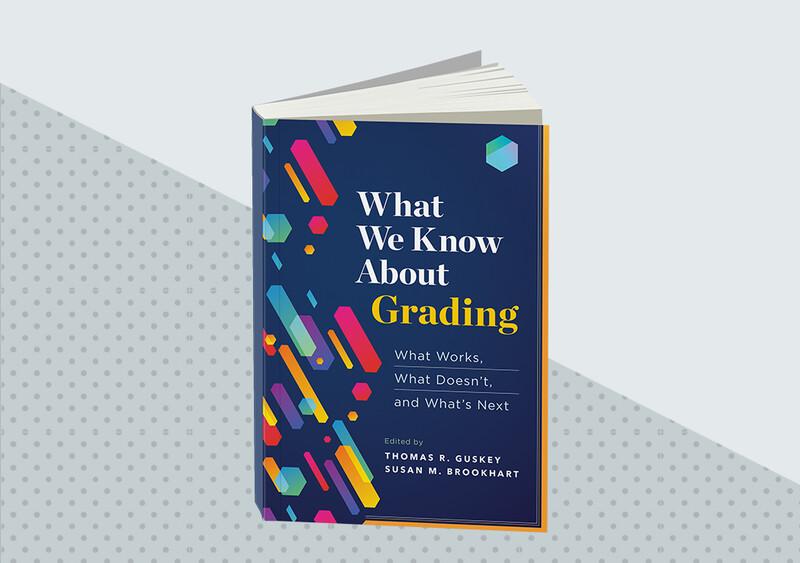An old adage says, "The first step in making a difference is believing that you can." In education, we refer to that belief as teacher efficacy. Among teacher qualities that contribute to success with students, teacher efficacy has been shown to be one of the most powerful (Kim & Seo, 2018). Still, few educators today know the precise nature of teacher efficacy, the history of the concept's development, how it's measured, or how teacher efficacy can be improved.
Locus of Control
For decades, researchers have been fascinated by the effects of individuals' perceptions of their personal influence on the world around them. Psychologists label this "attribution theory" because it describes the degree to which people believe they can affect and are responsible for different aspects of their lives.
One of the earliest attribution theorists was Julian Rotter, who noted in the 1950s and 60s that people tend to believe that control of events in their lives resides either internally within them, or externally with others or the situation. He labeled this tendency "locus of control" (Rotter, 1966). Individuals with internal locus of control believe in their personal ability to direct themselves and influence situations. They tend to be highly motivated and success-oriented. People with external locus of control, by contrast, believe that what happens around them and the actions of others are things they cannot influence. Events in their life are determined by forces over which they have little control, or are due to chance or luck. They generally see things as happening to them and tend to be more passive and accepting.
However, Rotter theorized that individuals have a spectrum of locus of control beliefs, and few people perceive they have a wholly internal or external locus of control. Instead, most people have a balance of views that varies depending on the situation. For example, some may be more internal in their beliefs at home but more external in their work lives.
In the early 1970s, Bernard Weiner and his colleagues (1971) added the dimension of stability to Rotter's theory and applied their new model to educators. They proposed that the attributions both teachers and students make about why a learner does well or stumbles academically include ability (which reflects an internal locus of control and is stable or fixed), effort (internal/unstable or alterable), task difficulty (external/stable or fixed), or luck (external/unstable).
To clarify how these kinds of attributions often play out, consider how a teacher might explain students' poor performance on an assessment, and whether she credits ability, effort, task challenge, or luck:
I don't know how to teach those concepts very well (internal, stable).
I didn't spend enough time planning my lessons for this particular unit (internal, unstable).
The assessment was too hard for my students (external, stable).
Students were having a bad day (external, unstable).
The teacher with the best prospects for improvement clearly would be one who attributes the result to internal and unstable, alterable factors related to effort, rather than to the lack of ability or external factors associated with the students.
We must focus on changing teachers' experience. We must support teachers in using strategies that improve students performance and help them gather trustworthy evidence on those improvements.
Enter Teacher Efficacy
Applications of attribution theory in education grew throughout the 1970s, leading to the concept of teacher efficacy, which refers to the internal attributions of teachers for student outcomes (Barfield & Burlingame, 1974). Interest skyrocketed, however, in 1977 when the Rand Corporation's Change Agent Study of federally funded programs intended to introduce and support innovative practices in public schools identified teacher efficacy as the most powerful variable in predicting program implementation success (Berman & McLaughlin, 1977).
Rand researchers defined teacher efficacy as "the extent to which the teacher believes he or she has the capacity to affect student performance" (McLaughlin & Marsh, 1978, p. 84). They measured teacher efficacy by asking teachers to rate their agreement with just two statements: "When it comes right down to it, a teacher really can't do much because most of a student's motivation and performance depends on his or her home environment" and "If I try really hard, I can get through to even the most difficult or unmotivated students." Numerous subsequent investigations confirmed the strong relationship between teachers' sense of efficacy and students' performance at all levels of education (Ashton, 1984; Guskey, 1987).
Can We Improve Teacher Efficacy?
Most efforts to enhance teacher efficacy are based on the social learning theory of Albert Bandura (1986), who proposed four major sources of efficacy perceptions: mastery experiences, vicarious experiences, verbal and social persuasion, and emotional and physiological states. Among these, mastery experiences have consistently proven the most powerful for teacher efficacy (Usher & Pajares, 2008). In other words, teachers' personal experiences of success or lack of success strongly shape their efficacy beliefs. By contrast, efficacy beliefs are only modestly changed by watching others, logical persuasion, or emotional circumstances. Real change comes through what teachers experience with their students in their classrooms.
An early study on the implementation of mastery learning provided an excellent example (Guskey, 1984). Mastery learning refers to an instructional strategy developed by Benjamin Bloom (1968) to better individualize learning within group-based classrooms through the use of regular formative assessments paired with specific feedback and corrective procedures (Guskey, 2020a). In this study, more than 100 teachers volunteered to participate in a professional learning program based on mastery learning. Half of the teachers were randomly selected to take part in initial professional learning activities; the other half served as a comparison (control) group and didn't receive any professional learning. For various reasons, some of those who participated in the professional learning were unable to implement the strategies in their classes. Among those who did implement mastery learning strategies, most saw improvements in their students' learning outcomes, but some did not.
This yielded four comparison groups: teachers who implemented the strategies and experienced improved student outcomes; those who implemented the strategies but saw little or no improvement; those who participated in the professional learning but never tried the strategies; and those who didn't receive the professional learning.
Comparisons among these groups using pre- and post-treatment measures on the Responsibility for Student Achievement scale (an instrument I developed in 1981 and an early proxy for teacher efficacy) showed that only teachers who saw improvements in students' learning expressed a significant increase in teacher efficacy. That is, engagement in professional learning and implementing new strategies alone made little difference. Change in teacher efficacy was primarily a result—rather than a cause—of measurable increases in student learning. What mattered was the mastery experience of teachers seeing their students doing better as a result of their efforts (Guskey, 2020b).
The Challenge: Helping Teachers to Mastery
Teacher efficacy theory and research continue to evolve. Just as the concepts of locus of control and responsibility for student achievement were broadened to yield teacher efficacy, adaptations of teacher efficacy are evident in many modern conceptions of teacher effectiveness. For example, Carol Dweck (2006) describes "growth mindset" as "based on the belief that your basic qualities are things you can cultivate through your efforts, your strategies, and help from others. . . . Everyone can change and grow through application and experience" (p. 7). These characteristics strikingly resemble aspects of internal locus of control and positive teacher efficacy.
Similarly, Albert Bandura's (2001) description of "agency"—"To be an agent is to intentionally make things happen by one's actions. Agency embodies the endowments, belief systems, self-regulatory capabilities, and distributed structures and functions through which personal influence is exercised" (p. 2)—aligns with an internal locus of control and positive teacher efficacy.
Still, the challenge before us remains how to cultivate and enhance teachers' sense of efficacy, growth mindset, or agency. Consistent research evidence shows that to do that, we must focus on changing teachers' experience. We must support teachers in using strategies that improve students' performance and help them gather trustworthy evidence on those improvements (Guskey, 2021). In particular, we must try to create situations where teachers can realize their actions have an important, positive influence on their students' learning. Instead of trying to change teachers' attitudes and beliefs directly, we must change the experiences that shape those attitudes and beliefs. Specifically, we must provide teachers with mastery experiences.
To do that, school leaders and those involved in offering professional learning must do two things. First, we need to engage teachers in professional learning experiences that focus on evidence-based practices. Instead of trusting the opinions of celebrity consultants or the topics trending on Twitter, we need to ensure the strategies we focus on in professional learning have been thoroughly tested and are backed by solid research showing their impact on student learning in contexts like our own.
Second, we need to establish procedures through which teachers can gain regular and specific feedback on how their actions are affecting their students. Teachers must see explicit evidence from their students in their classrooms that the changes make a difference. That evidence must come quickly, and it must be evidence that teachers trust. The mastery learning study described earlier provided that evidence through the use of regular formative assessments. But such evidence could also include improved daily work, indicators of increased learner confidence, better written assignments, or enhanced engagement in class lessons—as long as it allows teachers to see the positive effects of their efforts.
Professional Learning Tip
Instead of trusting the opinions of celebrity consultants or the topics trending on Twitter, we need to ensure the strategies we focus on in professional learning have been thoroughly tested and are backed by solid research.
Seeing the Difference
When it comes to teacher efficacy, a more accurate adage might be, "The first step in believing you can make a difference is seeing that you can." Personal experience shapes attitudes and beliefs. Teachers who see that their actions make an important difference for students not only develop an enhanced sense of teacher efficacy, they also become more open to new ideas to further boost their effectiveness. Knowing that what they do matters, they look for ways to get even better. Focusing on evidence-based practices and designing procedures for teachers to gain meaningful evidence about their positive effects on students is clearly the key to cultivating teacher efficacy—and bringing about significant and sustained improvement in education.
Assessment Guide
Read Thomas R. Guskey's co-authored book on grading.
Copyright © 2021 Thomas R. Guskey










